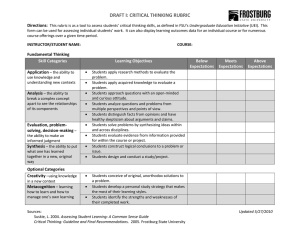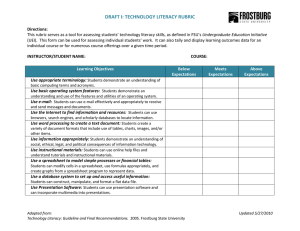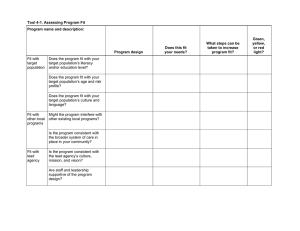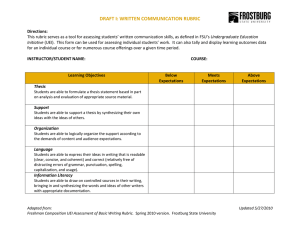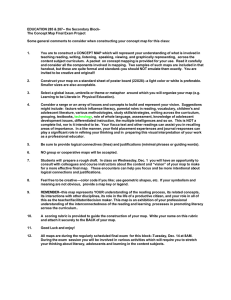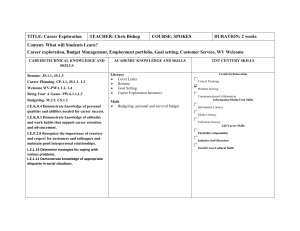DRAFT I: INFORMATION LITERACY RUBRIC
advertisement
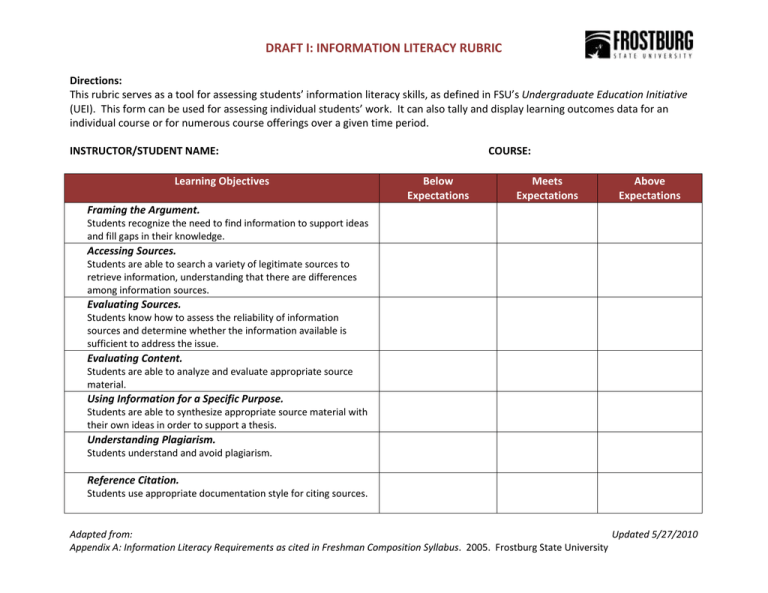
DRAFT I: INFORMATION LITERACY RUBRIC Directions: This rubric serves as a tool for assessing students’ information literacy skills, as defined in FSU’s Undergraduate Education Initiative (UEI). This form can be used for assessing individual students’ work. It can also tally and display learning outcomes data for an individual course or for numerous course offerings over a given time period. INSTRUCTOR/STUDENT NAME: Learning Objectives COURSE: Below Expectations Meets Expectations Above Expectations Framing the Argument. Students recognize the need to find information to support ideas and fill gaps in their knowledge. Accessing Sources. Students are able to search a variety of legitimate sources to retrieve information, understanding that there are differences among information sources. Evaluating Sources. Students know how to assess the reliability of information sources and determine whether the information available is sufficient to address the issue. Evaluating Content. Students are able to analyze and evaluate appropriate source material. Using Information for a Specific Purpose. Students are able to synthesize appropriate source material with their own ideas in order to support a thesis. Understanding Plagiarism. Students understand and avoid plagiarism. Reference Citation. Students use appropriate documentation style for citing sources. Adapted from: Updated 5/27/2010 Appendix A: Information Literacy Requirements as cited in Freshman Composition Syllabus. 2005. Frostburg State University
